OM SYSTEM OM-3: Tested
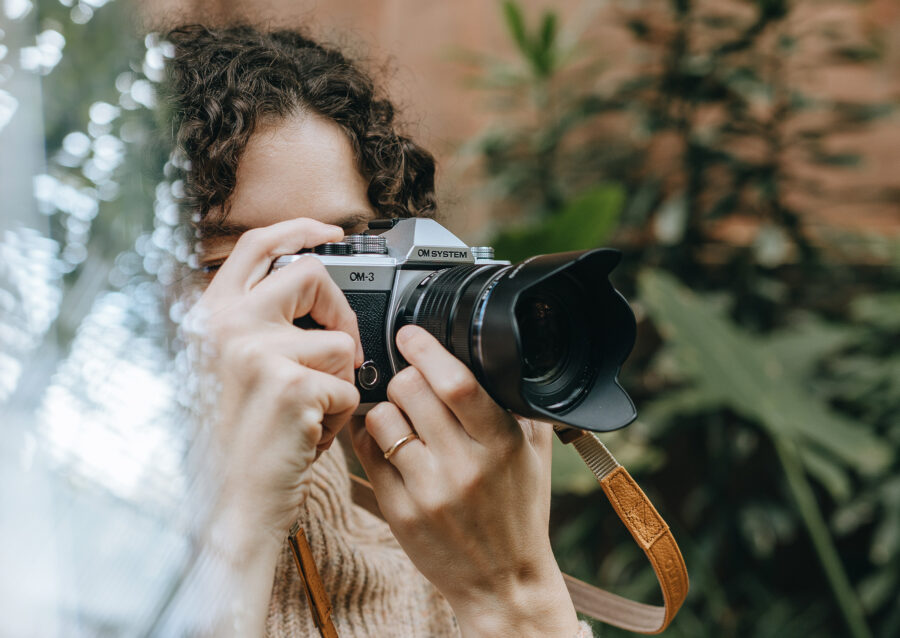
It’s always a tricky thing when a renowned camera brand revisits its history by releasing a ‘retro’ nod to its past. It can be a big win – especially if the original on which the shiny new version is based was truly memorable, and when the newbie’s design gets the combination of past and present correct. This is the case with OM SYSTEM’s new OM-3 camera. For those with long memories, and back when OM SYSTEM was Olympus, the original OM-1 film camera of the 1970s was a truly revolutionary product.
The combo of compact size and burly build quality – and those beautiful lenses – saw this diminutive image-maker become hugely popular; a camera that was equally at home on the street or at family gatherings as it was in the most rugged of outdoor environments soon reached icon status – as did its successors.
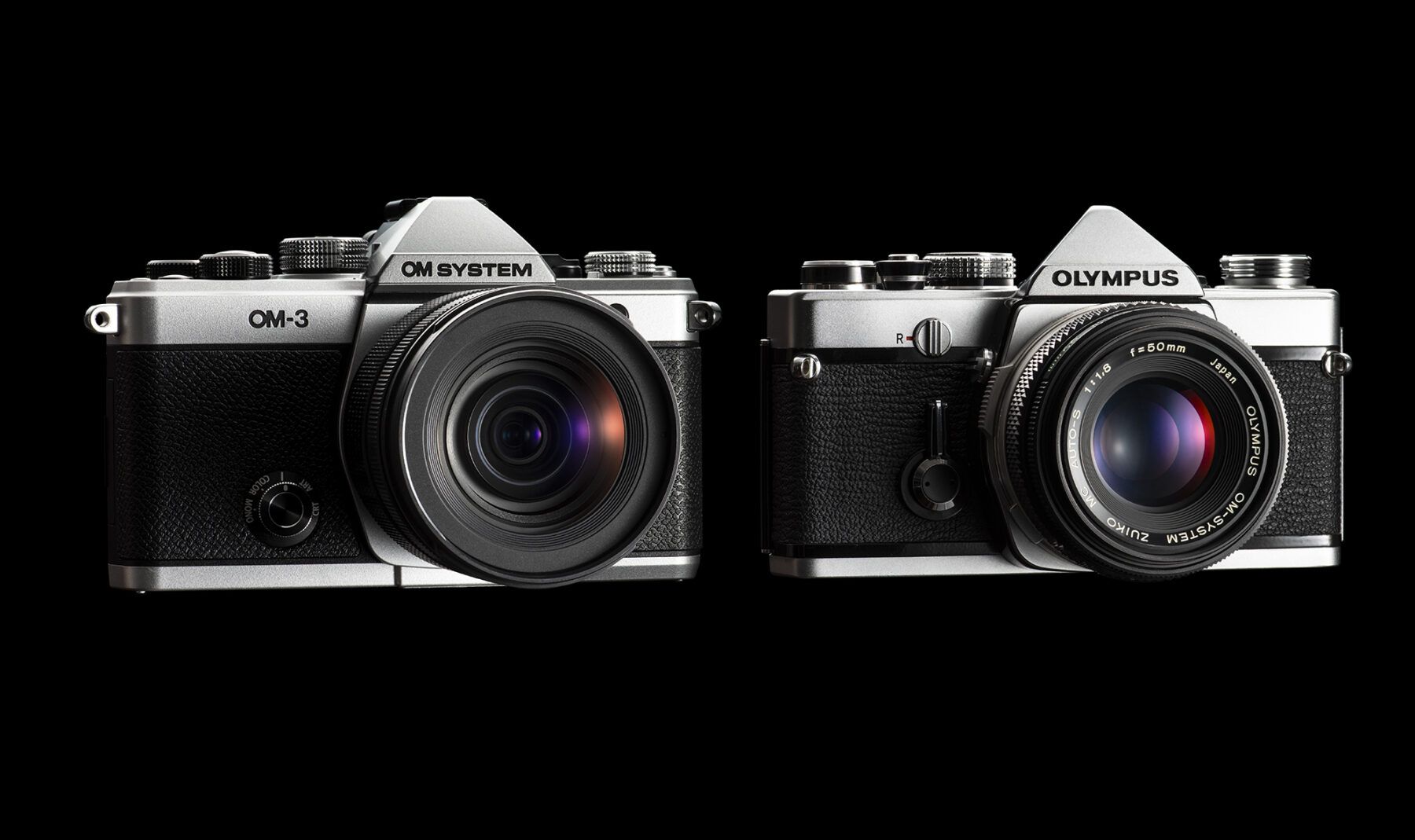
Fast-forward close to 50 years and OM SYSTEM has decided to revisit that ‘classic’ look and design, combining it with the latest in photographic technology. The new OM-3 fits the bill in terms of that ‘wolf in (sexy) sheep’s clothing’ cliche, with its beautiful metal exterior, design and styling. Underneath that timeless exterior is the latest micro four-thirds image-making tech, borrowing heavily from OM SYSTEM’s flagship OM-1 pro camera, in a slightly smaller physical package, with just a few minor differences.
Design
Returning to the first mention of the film-based Olympus OM-1, it’s clear that OM SYSTEM has looked to it for the exterior styling cues of the OM-3, and the result is one very beautiful looking camera body, with its slab-sided front (sans grip), switches (including a retro-inspired on/off lever) and machined dials up top. At the rear you will find the usual (six) button controls and four-way control pad but, perhaps surprisingly, no AF joystick. The front includes a dial (dubbed the Creative Dial) for filter options that allow you to adjust colour profiles with four presets, or monochrome (also with four presets, including Classic Film B&W and Classic Film Low Contrast). The camera body sits snugly in your hand, albeit with slightly more heft (at a still-light 413g) than its film-era source of inspiration.
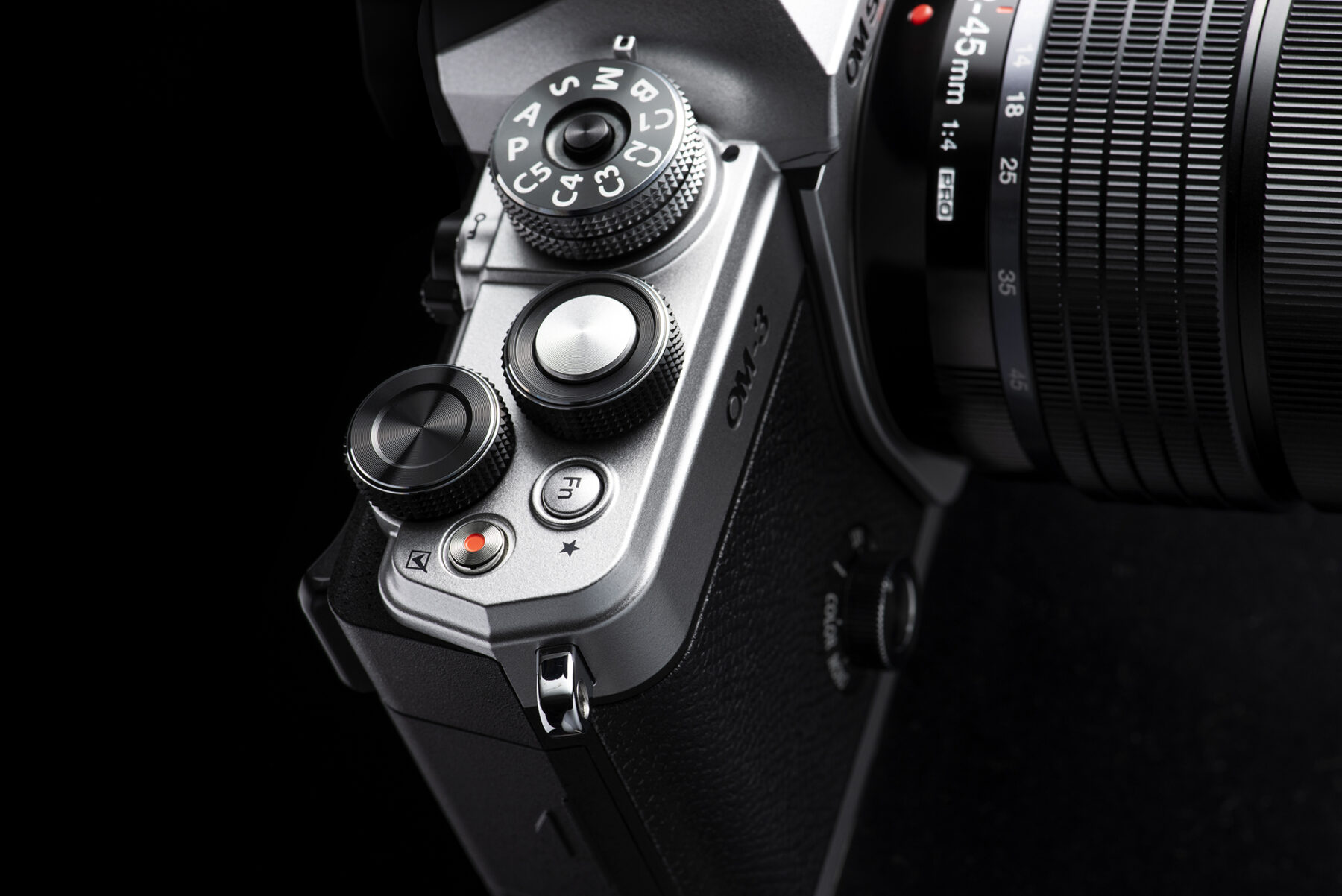
OM SYSTEM’s use of the micro four-thirds sensor has meant all its cameras are compact and light – as are the lenses (yes, even the PRO lenses) – and the resultant ease of carry/portability (on top of the image quality and functionality) has made the brand a huge favourite with outdoor enthusiasts and wildlife photographers thanks to low weight and compact size. The OM-3 is physically smaller than its OM-1 stablemate but, impressively, OM SYSTEM has still included all the weather-sealing of that pro model, ensuring the OM-3 can carry the same IP53 splash- and dust-protection resistance (when used with an equivalent rated lens). The OM-3, OM-1 and the just-released OM-5 Mark II are the only cameras to offer an IP53 rating for protection against moisture and dust. IP53 can be broken down as this: the ‘5’ indicates the camera provides partial protection against dust and other particulates, such that any ingress will not damage or impede the satisfactory performance of internal components; while the ‘3’ denotes the fact the camera is protected against water spray at angles of up to 60 degrees off vertical for a minimum of three minutes. It’s also freezeproof, with the ability to function at down to -10 degrees Celsius.
The left-side dial on the OM-3 allows you to switch between stills and video, while there is a new CP button, which allows users to access OM SYSTEM’s excellent computational photography modes (including graduated – and live – ND, along with high-res multi-shot, focus stacking – up to 15 frames max – and other options). As with the OM-1, the OM-3 does also allow you to customise buttons, too, to better suit how you use each one.
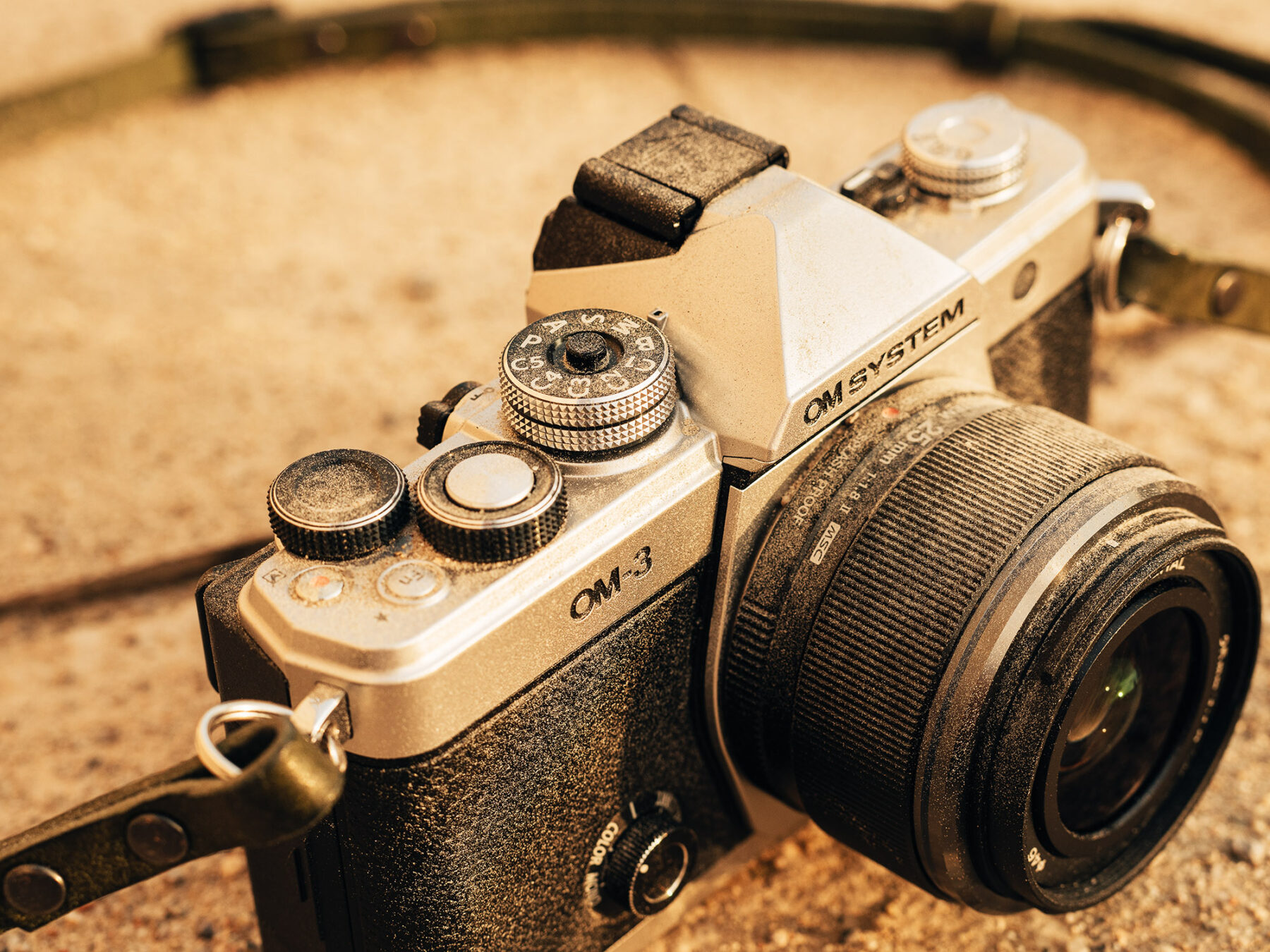
OM-1 users will note, however, that the EVF on the OM-3 is of lower resolution than that flagship camera; the OM-3 ships with a 0.68x 2.36-million dot EVF (the OM-1 has a 0.82x 5.8mp variant) and a 1.66mp rear Vari-angle touchscreen, and there is only one SD card slot. This may be an issue for those who like the assurance of two cards for back-ups/safeguarding against failure, but it could be considered to fit in with the OM-3’s more ‘general purpose’ remit. The OM-3 has a slightly lower image stabiliser, too, at a claimed 6.5 stops (at centre; 5.5 for corner) or up to 7.5 stops (at centre; 6.5 at corner) with Sync IS lenses (compared to 8.5 for the OM-1). For videographers, a small tweak to the OM-3 is the ability to change the continuous AF to a slower (or faster) rate than previously available in the OM-1.
Those differences aside, the OM-3 shares the same 20MP stacked, back- and side-illuminated, CMOS sensor of its pro sibling, with 1053-point Cross-Type On-chip Phase Detection Quad Pixel AF, as well as the same crazy-fast shutter rates (up to 50 frames per second with AF; 120FPS with focus locked). Images are recorded in RAW (12-bit) or JPEG. One difference is the OM-3’s mechanical shutter, which will only go to 6FPS, as opposed to the OM-1’s 10FPS. The OM-3 has no inbuilt flash but can use OM SYSTEM’s optional flash units. The OM-3 supports a very fast 1/8000-sec mechanical exposure time and an incredible 1/32,000-second time in electronic shutter mode. The system is accessed via the ‘Menu’ button, while the rear touchscreen can also show the Super Control Panel, an excellent feature of OM SYSTEM cameras that gives you quick access (and shows the info) for the main settings for stills and video.
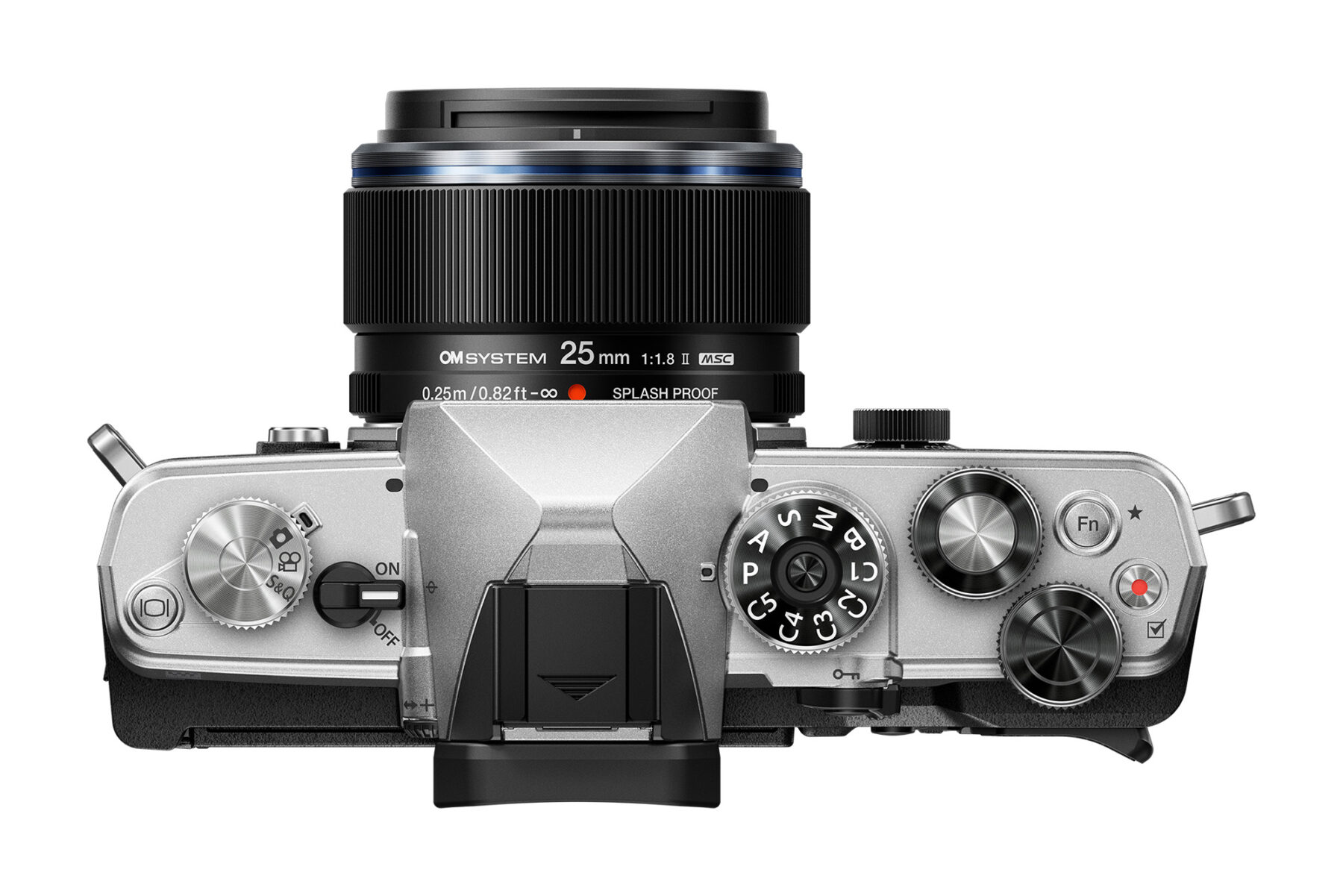
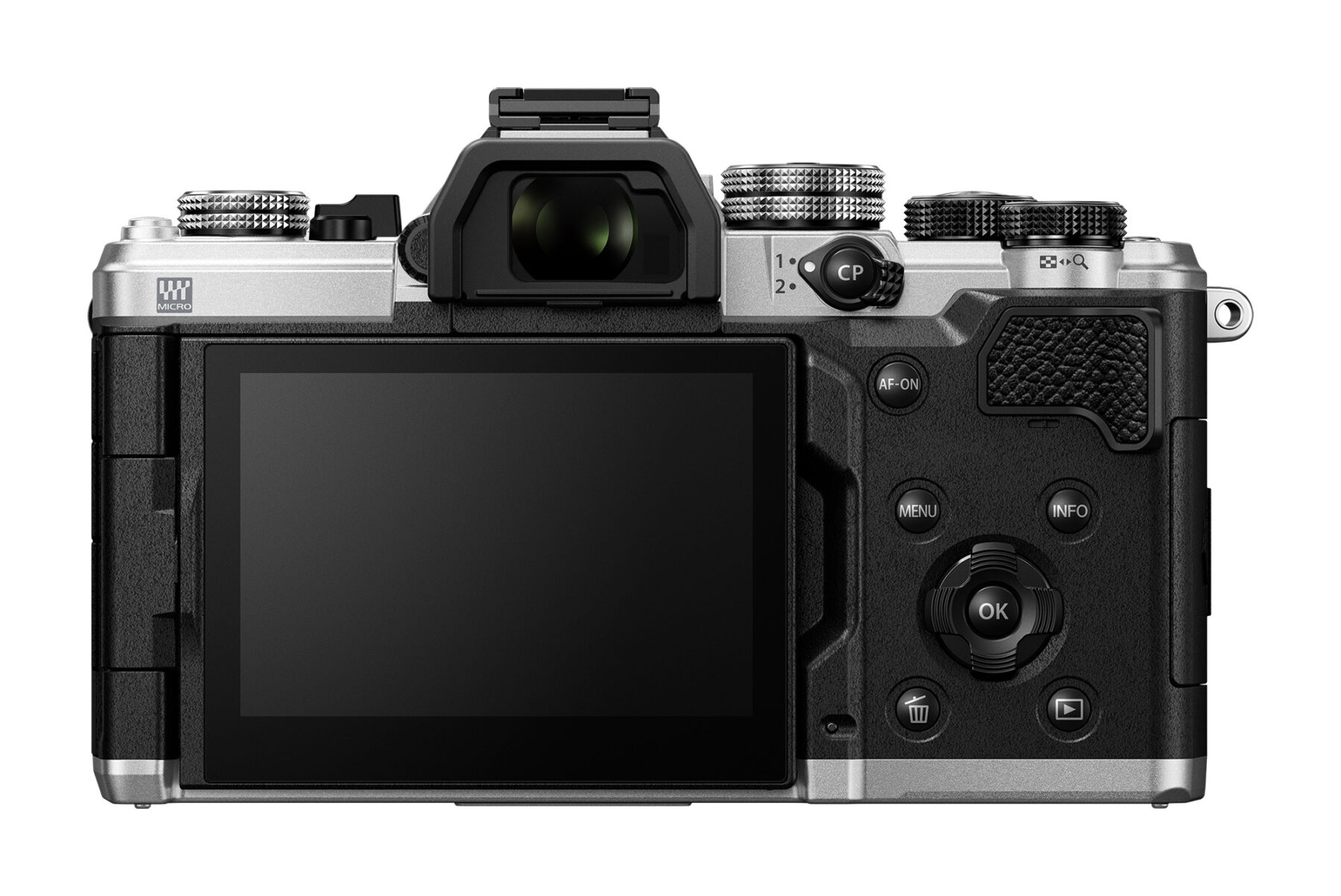
Speaking of video, the OM-3 offers up to 30 minutes of continued recording, and you can record at 4K up to 60FPS. You can also shoot vertical video footage (hello Insta and TikTok). Handy video features include time coding, focus peaking and zebra patterns, plus you can overlay grid lines if you so desire. Finally, you can access live view through the camera’s HDMI connection, and you can edit the start or end of any video footage in-camera.
Finishing off the specs are the connection ports on the body’s left side: a USB-C connection (for charging and connection to computer), micro-HD and two 3.5mm jacks (for headphones or mic attachment). There’s a cool app – OM Image Share – and the camera easily pairs with smartphones. Finally, the OM-3 uses the same BLX-1 battery as the OM-1 Mark II, with a CIPA-rated 590 shots per charge (in real use, it’s always more).
In the field with the OM SYSTEM OM-3
As you’d expect from a camera that shares most of its internals with the OM-1, the OM-3 is impressive across all types of photography (note: we tested this camera as primarily a photographic tool, with minimal video filming during the test period). The fast autofocus system (using 1053 cross-type phase focal points and well-developed subject detection) was reliable in the field, whether that was photographing action sports, wildlife or street photography. We did miss the AF joystick, although soon adapted to the touchscreen and/or the four-way pad to select a focal point. We do think the EVF resolution does let the rest of the camera down a bit, especially when it comes to manual focus moments but, again, we got used to it over the test period.
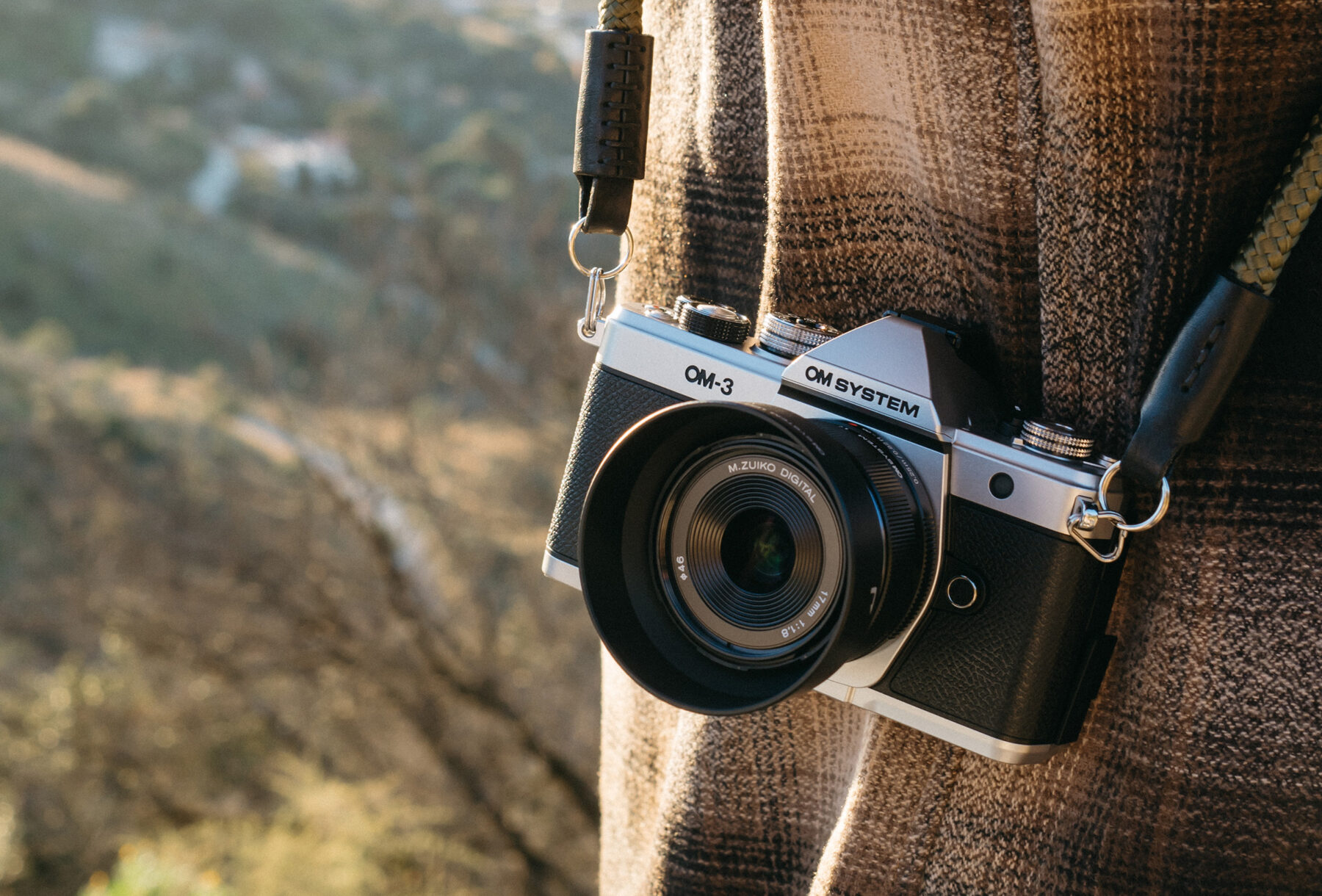
In the hand, the OM-3 is very comfortable when using shorter zooms or prime lenses. For a morning of street photography, we attached the M.Zuiko Digital ED 25mm F1.2 PRO lens and it was perfect in that scenario. The light weight, and the compact combo of body and lens made for an unobtrusive package, allowing us to get close to subjects without them feeling like they were under the spotlight, so to speak. Even with the mid-weight M.Zuiko Digital ED 12-40mm F2.8 PRO II lens attached, it felt well balanced. It was only when we moved to bigger zoom lenses, such as the M.Zuiko Digital ED 40-150 F2.8 PRO and the 12-100mm F4.0 PRO, that the combo felt front-heavy; a small grip would’ve helped in those situations.
For fast frame rate photography – primarily action – the OM-3 was reliable, with that amazing 50FPS rate quite handy for fast-moving humans and/or birdlife. Worth noting is, as with the OM-1, that top-tier frame rate is only available when you use certain PRO lenses, such as the 12-40mm F2.8 (version I and version II), the excellent 300mm F4 prime, the 12-100mm F4, 40-150mm F2.8 and OM SYSTEM’s iconic 150-400mm F4.5 TC1.25X IS.
The OM-3 features OM SYSTEM’s Pro Capture mode and this was utilised, again, for mainly action and wildlife; the ability to pre-capture a particular moment is a boon (by pressing the shutter halfway down, the camera buffers images continually, but only records the images when you press down fully) and you can tweak the frame rate for Pro Capture, too, which is also handy. Subject recognition in OM SYSTEM cameras has proved dependable in the past and the OM-3’s performance here is no different; the focus system was mostly reliable in grabbing the eye of a bird, or staying stay locked on a person’s face when they were moving erratically. The system (like all) is not infallible, but we were happy with our keeper rate over the test period.
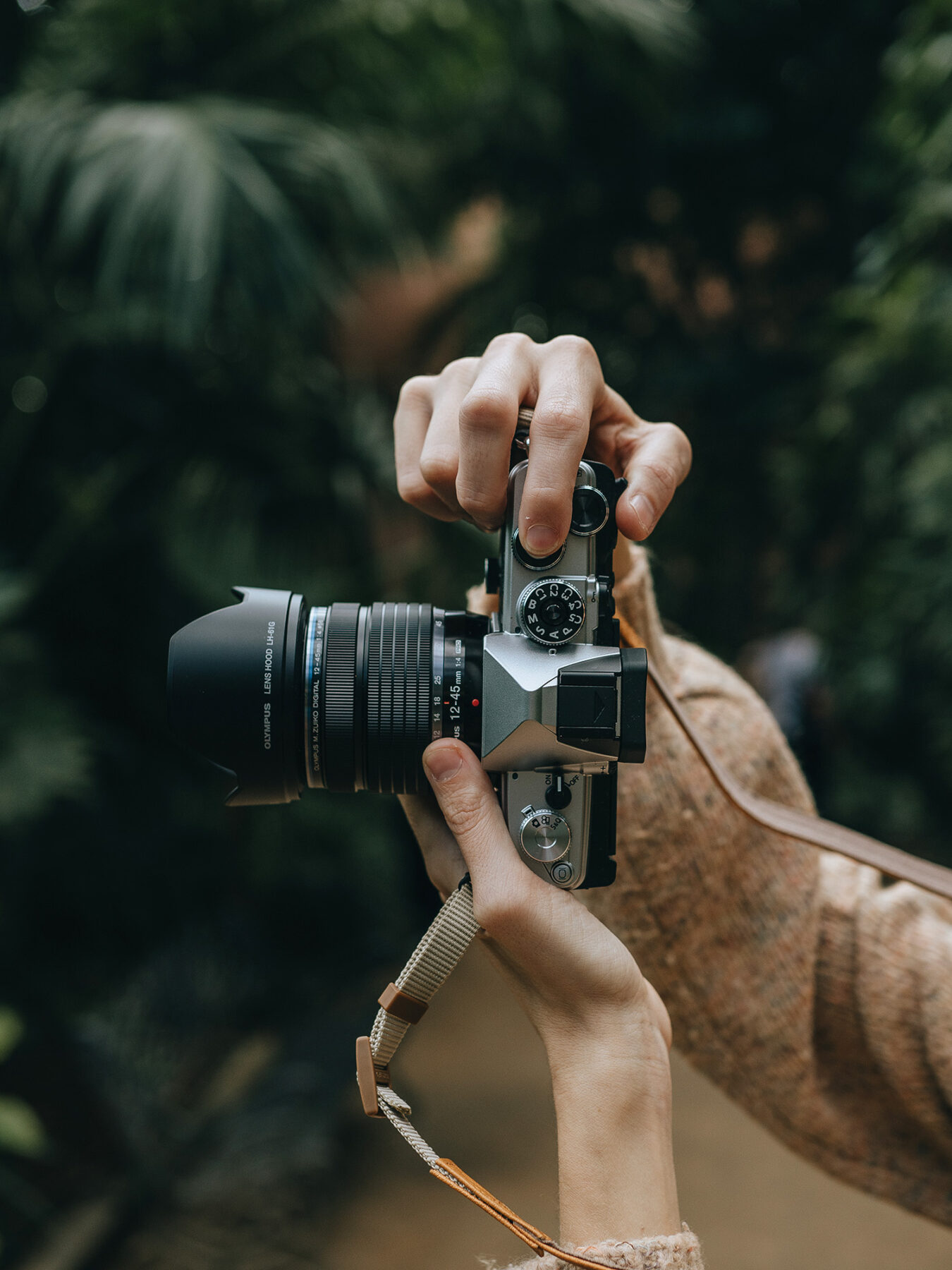

Owing to the smaller physical size of the micro four-thirds sensor, low light photography does take more forethought but thanks to the OM-3’s image stabilisation – and those fast and light M.Zuiko lenses – the results are still very good. We regularly shot at ISO6400 (and 12800) during testing and were, in the main, happy with the images. Note that we were always conscious of ensuring accurate exposure as this does help minimise digital noise. Of course, with the noise reduction software options available these days, digital noise is far less of a ‘problem’ than in the past.
Even allowing for one tester being an OM SYSTEM photographer and thus having some familiarity with it, we still rate the OM-3’s menu system as easy to use; with the high levels of button/switch customisation new users of the system can soon customise and adapt it to what they prefer.
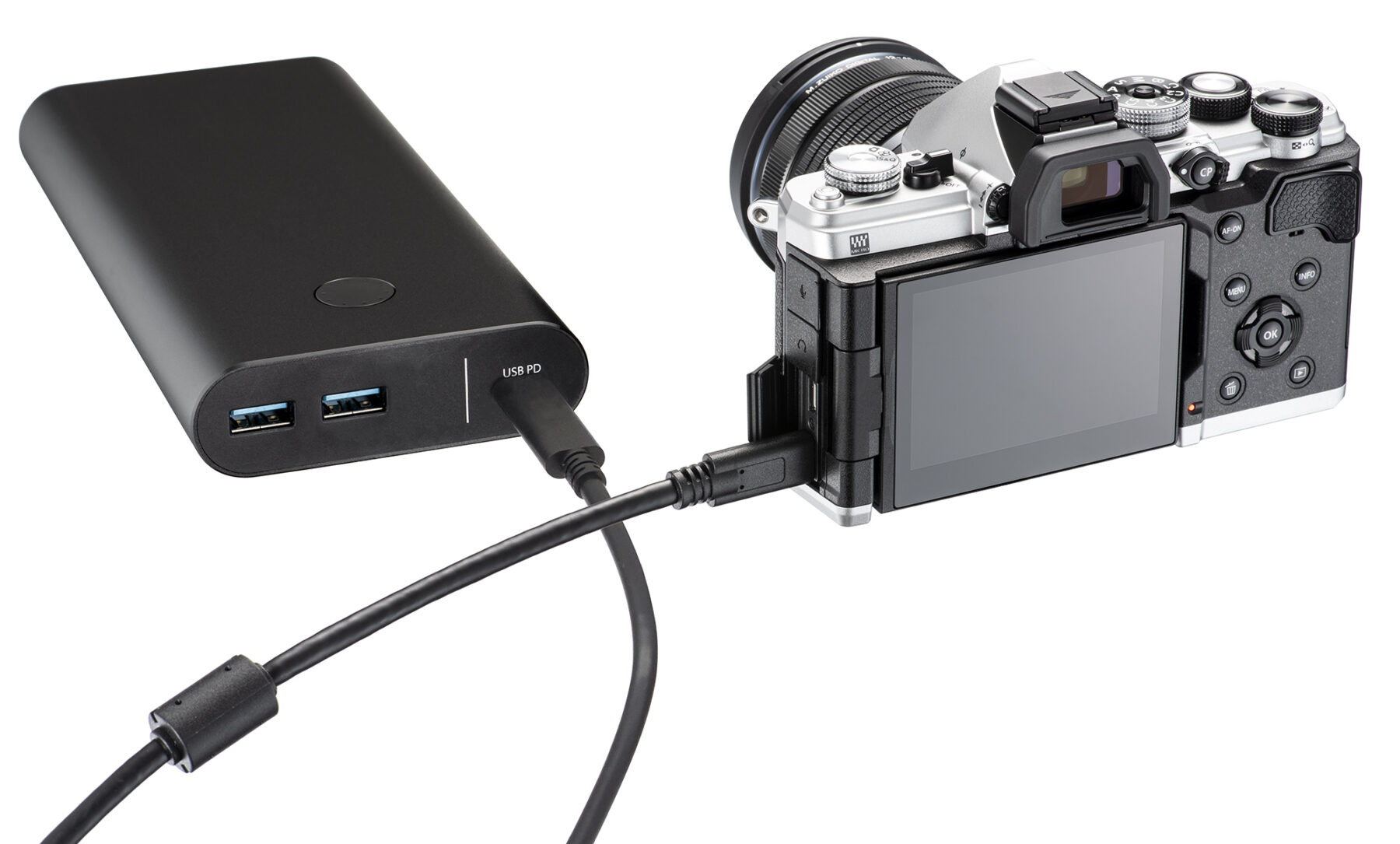
One thing our regular OM-1 user noted was, even though it doesn’t look like much on paper, the smaller form factor and estimated 25 per cent lighter weight of the OM-3 (compared to OM-1) were welcome, most notably when walking around with the camera in-hand or over the shoulder. Having very close to the same high capabilities of its heavier pro-level stablemate in this lighter package, was great. You’d be looking at twice the weight (easily) for an equivalent spec full-frame camera.
The final word on the OM SYSTEM OM-3
There are myriad cameras out there that tout their travel/all-rounder capabilities, and they succeed to varying degrees. The OM-3 is probably one that comes closest to that ideal; a lightweight, retro-styled body that is rugged and durable and still includes most of the high-end features of its ‘bigger’ pro stablemate, while being ‘easy’ to bring with you without any second thought.
Of course, there are some features that look a little out of place. By that, we mean the noticeably lower resolution of the EVF, and the lack of an AF joystick. Of the two, it’s the joystick we’d have preferred to see included. We’d also like to see an optional hand grip to help balance the camera body with those larger lenses when in use. None of these, however, would be considered deal-breakers, and it’s worth noting (again) that one of the main reviewers of the OM-3 uses the OM-1 regularly, so some of these viewpoints are set against that experience.

Yes, if you’re not already in the OM SYSTEM ecosystem, you will have to consider the larger investment of not only the body, but the lenses as well. Having said that, the lenses available for the OM SYSTEM cameras are spread across a wide range of price points, and are of high quality – at competitive prices. And that does apply to the PRO series of lenses, too, when compared to other brands’ top-tier glass.
To wrap up it up, for anyone looking for a tough and reliable travel/all-rounder camera that is compact enough to take anywhere, from your child’s birthday party to an outdoor expedition, and with some seriously excellent lenses available to use with it, we’d recommend the OM-3 as an option. We hope to keep the OM-3 on test for a few more months, so look for our long-term review in Aus Geo ADVENTURE Issue 14, on sale late October.
RRP: $3199
See OM SYSTEM for stockists and more info.

